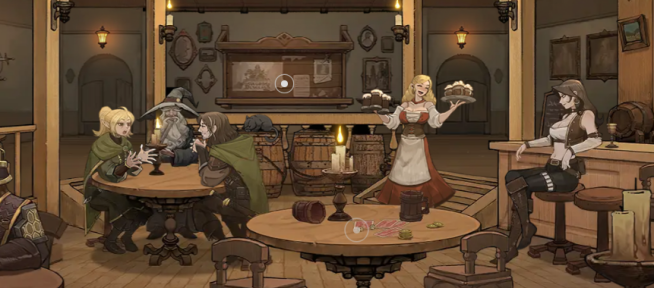
In the current blockchain game ecosystem, $GOLD token, as an important component of the Swords and Dungeons (SND) project, has gradually attracted the attention of more and more players. This article will introduce in detail the characteristics of $GOLD, how to obtain it, and its importance in the game, so that players can better understand the value of this token.
Swords and Dungeons Overview
Swords and Dungeons is a massively multiplayer online role-playing game (MMORPG) known for its rich gameplay, replayability, and social nature. Players can upgrade characters, forge equipment, cultivate servants, recruit companions, and participate in free transactions, team battles, and various limited-time activities in the game. These gameplay methods not only increase the fun of the game, but also allow players to purely enjoy the game without any money investment.
Basic information about $GOLD token
$GOLD is another token issued by the Swords and Dungeons project with a total supply of 1,000,000,000. Participating in the Swords and Dungeons project is a prerequisite for obtaining $GOLD, and holding the Genesis Battle Pass NFT can significantly improve the efficiency of generating $GOLD in the game. This makes $GOLD a core asset not to be missed.
How to obtain $GOLD: In Swords and Dungeons, players can obtain $GOLD in a variety of ways. First of all, participating in various in-game activities and challenges is the main way to obtain $GOLD. In addition, players who hold Genesis Battle Pass NFTs will see a significant increase in the efficiency of generating $GOLD, making these NFTs important assets in the game.
Layer Zero Platform Architecture
The Swords and Dungeons gaming platform is conceptualized as a Layer Zero architecture, where each kingdom is treated as a standalone Layer 1 application. This design allows the mining farms and hunting grounds in each kingdom to be regarded as Tier 2 and Tier 3 respectively, providing community-driven, customization, free market and diverse gaming experiences for different types of players.
Fine stratification of player types: Based on different types of players, Swords and Dungeons has customized different game paths and profit models. For example, for high-investment "whale" players, the game designs more challenging tasks and higher rewards, while for ordinary players, it provides a relatively easy game experience. This fine layering operation allows each player to find a way to play that suits them, improving the overall gaming experience.
Guilds and Autonomous Systems
In Swords and Dungeons, guilds or players can have their own servers and customize the economic model and output curve within the server. This means that the servers of different guilds operate independently in terms of output, and the governance tokens are interoperable, forming a multi-box economic model. This model effectively mitigates the risk of possible collapse of a single economic system, giving players more options to maintain the dynamic balance of various economic systems.
The advent of the UGC 2.0 era: As Swords and Dungeons enters the UGC 2.0 era, players can not only create and produce game content, but also formulate and manage the in-game economic system and rules. Each guild and server can freely adjust the economic output and governance model, allowing players to play more roles in the game and experience an unprecedented governance experience. This all goes to show that autonomy will be a key component of the future of Web3 gaming, and SND is one of the platforms that excels in this regard.
The power of community driven
The community of Swords and Dungeons is considered its most valuable asset. The game provides the community with a Layer Zero gameplay platform and tools for community autonomy, and introduces a Token-incentivized co-construction model. Community members who actively contribute will receive ecological Token rewards and participate in the overall governance of the community. This Token incentive model not only enhances the cohesion of the community, but also attracts more partners and communities to join.
$GOLD’s economic model: In Swords and Dungeons, $GOLD’s economic model is the cornerstone of the game. Players can recharge in-game using $USDC to purchase in-game diamonds, which are the most important currency in the game. Not only can they be used to purchase high-value items and limited-time packs, they can also be traded between players through the consignment shop. It is worth noting that a significant portion of the $USDC deposits in the game will be used to buy back $GOLD and $SND tokens, which further strengthens $GOLD’s market position.
Market data for $GOLD: According to the latest market data, $GOLD’s trading volume reached 44,653,800 in the past 24 hours, with a transaction volume of $12,332,300 and a turnover rate of 279.09%. These data show the liquidity and market activity of $GOLD, attracting more and more investors and players to participate.
in conclusion
To summarize, the $GOLD token occupies a pivotal position in Swords and Dungeons. It is not only an important way for players to obtain in-game resources, but also an indispensable core asset in the entire game ecosystem. As SND continues to develop, the value of $GOLD is expected to further increase and become a pearl in the blockchain gaming field. Whether you are a newbie or an experienced player, participating in the journey of Swords and Dungeons and earning $GOLD is an opportunity you cannot miss.